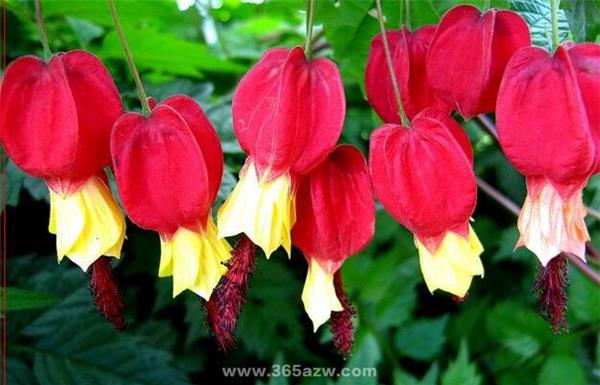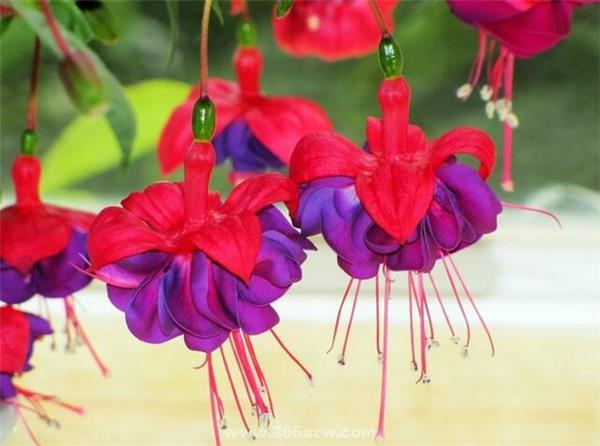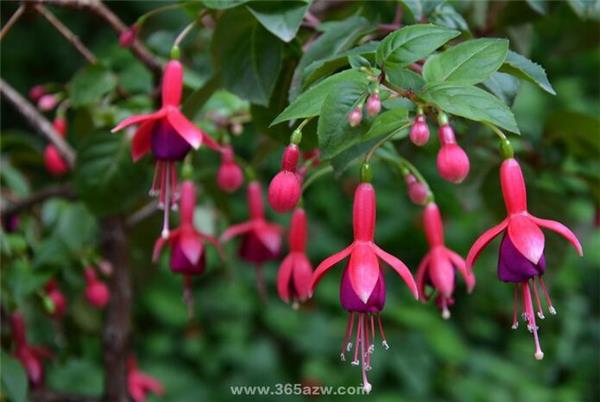Introduction to the Culture method of Lantern Flower
Lantern flower is like a small lantern, is a kind of herbaceous flowers, the common colors are mainly purple, red, and white and other varieties, look very delicate and beautiful, high ornamental value, let's take a look.

Culture methods of Lantern Flowers
Lantern flowers produce few seeds and often rely on cuttings to reproduce. Lantern flowers are mainly propagated by cuttings, which are cut in January, February and October. The suitable temperature is 15 ℃ and 20 minutes, and it takes about 20 days to take root. Cutting 5-8cm, the growing tip is used as cuttings. When the temperature is 20 ℃, the shoots will take root two weeks after cutting, and pot in time after rooting, otherwise the roots are easy to rot. Resident cuttings can be propagated all year round, and they can take root faster in spring and autumn. Cuttings with top twigs are the best, with a length of 7mur8 cm. They are inserted in a sand bed and kept moist. They take root about 10 days after insertion and can be put on the pot in September.
1. Temperature requirements of lantern flowers: warm and humid, sunny and well-ventilated in winter, and high dry, cool and semi-overcast conditions in summer. Avoid extreme heat, muggy heat and rain in the sun. The suitable temperature for the growth of lantern flower is 10 murmur25 ℃. The temperature in winter is not lower than 5 ℃. The growth was very slow when the summer temperature reached 30 ℃, and withered and died in large numbers at 35 ℃.
2. Watering and fertilization of lantern flowers: watering lantern flowers in spring and autumn should grasp the principle of seeing dry and wet, in order to keep the basin soil moist. The basin soil should be dry in midsummer, and the relative air humidity can reach more than 60% by spraying water. It should be moist in winter to promote the growth of new shoots. In spring and autumn, dilute liquid fertilizer was applied once every 10 to 15 days, and once a week during the bud period. The new plants cultivated in the first year and the spring of the same year are still fertilized normally in summer to continue to bloom, while the old perennial plants stop fertilizing because they are in the dormant period.

3, the key points of the maintenance of lantern flowers: first, put the lantern flower plants in shade, ventilation, cool and shelter; spray water to the leaves many times a day, sprinkle water on the ground, reduce the temperature and increase air humidity. The second is to control the water and stop the fertilizer for the perennial old plants to get through the dormant period smoothly. The plant should enter the room before Frosts Descent and leave the room after Qingming Festival, and the room temperature should be kept above 5 ℃. In case of cold spell and wind and snow weather, when freezing outside, it is best to move back indoors.
4. The lantern flower grows fast and requires sufficient nutrients, so the basin soil should be rich in humic sandy loam. And add 20% to 30% fully rotten animal manure. To enter the peak growing season, we should also apply liquid fertilizer, turning over the basin and changing the soil in spring in each of the first three years to replenish nutrients. After planting, it can blossom in the second year if it is well managed. Because the branches and leaves are luxuriant, it is necessary to hit the top in time, maintain the appropriate plant height and plant type, and the branches should be dense and dense due to flowering.
Matters needing attention in breeding Lantern Flowers
The main results are as follows: 1. When the summer temperature exceeds 38 ℃, the metabolism is slow, and the growth of lantern flowers is stagnant. The phenomenon of fallen leaves and rotten roots often occurs. If effective measures are not taken, the whole plant will die.
2. The lowest temperature of greenhouse in winter should be kept at 10 ℃. At the low temperature of 5 ℃, it is easy to be damaged by freezing. The room temperature for growth is 10-25 ℃, which requires high air humidity.

Control of Lantern Flower Diseases and insect pests
Its common symptoms are generally gray mold, powdery mildew and so on.
Botrytis cinerea is mainly harmful to flowers, stems and leaves, and water stains generally appear in the affected parts. 65% zinc or 50% carbendazim and other new agents with 500 times liquid can be used at the initial stage of the disease, sprayed once every 7 to 10 days, 3 times in a row for 4 times, usually pay attention to ventilation and light, so that the plant grows well and improves plant disease resistance. After the disease, the diseased branches and leaves should be cut off and treated in time to reduce the source of the disease.
The main harm of powdery mildew is also flowers, stems and leaves. The symptom of powdery mildew is that there is a layer of white powder on the surface. At the initial stage of the disease, we should pay attention to ventilation and light, increase the application of phosphorus and potassium fertilizer, and improve plant disease resistance. After the onset of the disease, spray 70% Tuobu body fluid or 2500 times liquid powder rust or other appropriate medicament in time, spray every 10 days, spray 2 times 3 times continuously.

The above is the lantern flower maintenance related introduction, hope to be helpful to you.
Related
- Wuhan Hospital Iron Tree Blooming Result Was Instantly Frightened by the Gardener Master
- Which variety of camellia is the most fragrant and best? Which one do you like best?
- What is the small blue coat, the breeding methods and matters needing attention of the succulent plant
- Dormancy time and maintenance management of succulent plants during dormancy
- Minas succulent how to raise, Minas succulent plant pictures
- What are the varieties of winter succulent plants
- How to raise succulent plants in twelve rolls? let's take a look at some experience of breeding twelve rolls.
- Attention should be paid to water control for succulent plants during dormant period (winter and summer)
- Watering experience of twelve rolls of succulent plants
- Techniques for fertilizing succulent plants. An article will let you know how to fertilize succulent plants.



